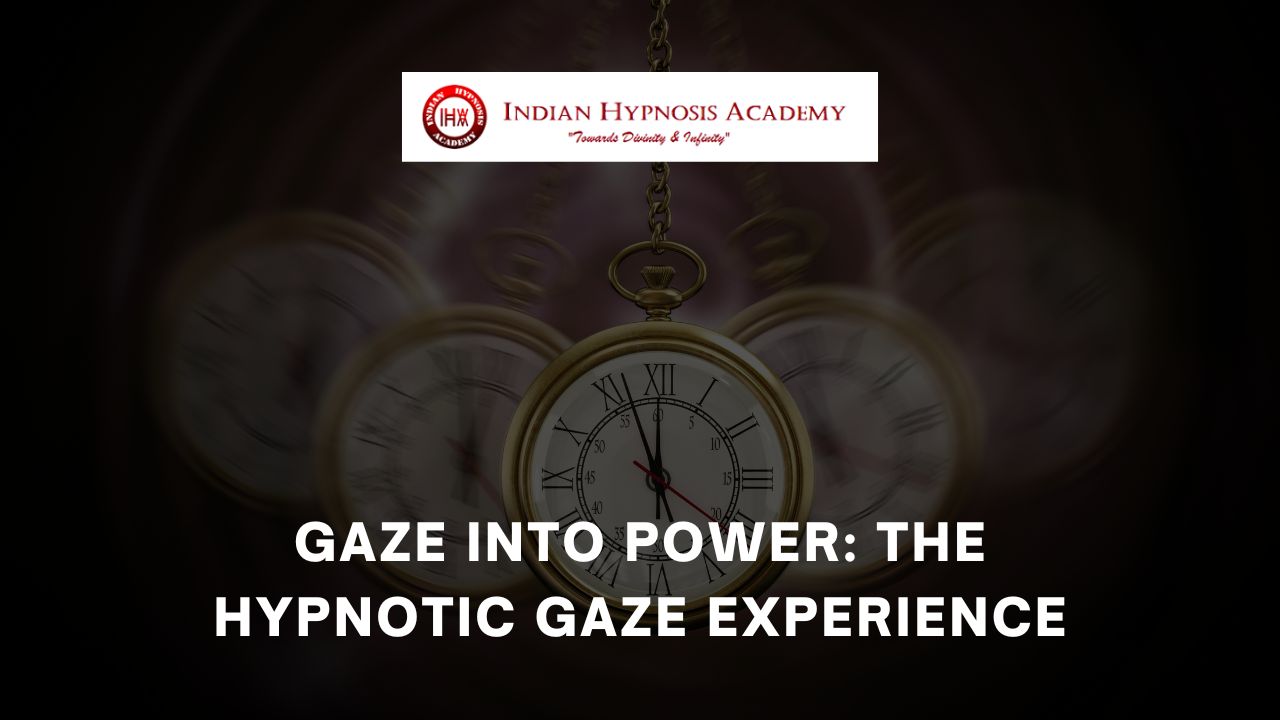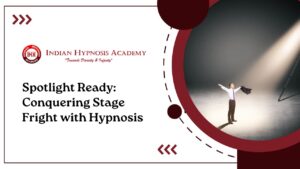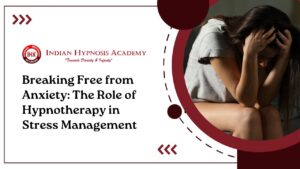Welcome to the mesmerizing world of the hypnotic gaze! Have you ever found yourself captivated by someone’s intense stare, unable to look away? Well, my friend, you have just experienced the power of the hypnotic gaze. In this blog post, we will delve deep into this intriguing phenomenon and explore its origins, techniques for mastering it, benefits of using it, common myths surrounding it, tips for improvement, ethical considerations when employing it, and even real-life examples that will leave you in awe.
Prepare to be entranced as we unlock the secrets behind the hypnotic gaze. Whether you’re a curious skeptic or an aspiring practitioner seeking to harness its mystical allure – this article is your gateway into a realm where eye contact becomes a conduit for persuasion and influence.
So grab a seat and fix your gaze on these words as we embark on an unforgettable journey into the enigmatic world of the hypnotic gaze! Remember to keep an open mind because what lies ahead might just change how you perceive human connection forever. Are you ready? Let’s dive in!
Understanding the Power of the Gaze
The power of the gaze is a force that transcends language and goes straight to the core of human communication. It is an innate ability we all possess, yet only a few truly understand its potential. The gaze has the remarkable capability to convey emotions, thoughts, and intentions without uttering a single word.
When someone locks eyes with another person, an unspoken connection is established — a silent dialogue between souls unfolds. In that intimate moment, barriers are broken down, and vulnerabilities are exposed. The power lies in this raw vulnerability; it allows for genuine connections to form and trust to be built.
But what makes the gaze so potent? It lies within its ability to tap into our primal instincts. From ancient times when survival depended on reading nonverbal cues from others, humans have honed their skills in deciphering gazes. It triggers deep-rooted responses in our subconscious minds, evoking emotions such as attraction or intimidation.
Whether used consciously or unconsciously, the power of the gaze can influence perceptions and shape outcomes in various aspects of life – from personal relationships to professional settings. Understanding this power grants us greater control over how we connect with others and navigate social dynamics.
Intriguingly enough, not all gazes hold equal weight. Different types of gazes carry different meanings – from soft glances filled with tenderness to piercing stares conveying dominance or authority. By recognizing these distinctions and learning how they impact interactions, we can harness their potential for effective communication.
So next time you find yourself engaged in eye contact with another person – take a moment to reflect on the immense power behind that simple act. Let your gaze speak volumes without saying a word!
The History and Origins of Hypnotic Gaze
To truly understand the power of the hypnotic gaze, it’s important to delve into its fascinating history and origins. Dating back thousands of years, this technique has been used by various cultures around the world for different purposes.
One of the earliest recorded instances of hypnotic gaze can be traced back to ancient Egypt, where priests would use their eyes to induce trance-like states in individuals seeking spiritual guidance or healing. This practice was also prevalent in ancient Greece, with famous philosophers like Pythagoras exploring the concept.
In more recent history, mesmerism gained popularity during the 18th century thanks to Franz Anton Mesmer. He believed that a magnetic force flowed through all living beings, and by gazing into someone’s eyes, he could channel this energy and influence their state of mind.
During the late 19th century, hypnosis as we know it today began to emerge. Pioneers like James Braid refined mesmerism techniques and developed new methods for inducing trance using focused eye contact.
Fast forward to modern times; hypnosis continues to captivate researchers and practitioners alike. With advancements in neuroscience and psychology shedding light on its mechanisms, hypnotic gaze is now recognized as a powerful tool for therapeutic intervention and personal development.
Techniques and Methods for Mastering the Hypnotic Gaze
So, you want to master the hypnotic gaze? Well, buckle up because I’m about to share some powerful techniques and methods that will help you do just that.
First things first, it’s all about eye contact. Lock eyes with your subject and maintain a steady gaze. This shows confidence and creates a strong connection between you and the person you’re trying to influence.
Next, focus on your breathing. Deep breaths in and out can help relax both yourself and your subject. Remember, a calm demeanor is key when attempting to mesmerize someone with your gaze.
Another technique is using visualization. Imagine a beam of energy flowing from your eyes into the other person’s mind. Visualize this energy wrapping around their thoughts, gently guiding them towards the desired outcome.
Body language plays an important role too. Stand tall with open posture, as if you exude power and control effortlessly. Keep any nervous fidgeting or twitching at bay – it only distracts from the intensity of your gaze.
Practice makes perfect! Set aside time each day to practice honing your hypnotic gaze skills. Start by practicing on yourself in front of a mirror; observe how different facial expressions affect the impact of your gaze.
Don’t forget about intentionality behind every look! Your intentions should be clear – whether it’s persuading someone or simply captivating their attention – they’ll pick up on it through subtle cues in your expression.
Mastering the hypnotic gaze takes time and effort but can be an incredibly powerful tool once mastered. So go ahead, give these techniques a try! You might just unlock a whole new level of influence over others without saying a word.
Benefits of Using Hypnotic Gaze
The power of the hypnotic gaze extends far beyond its mesmerizing effect. When used effectively, this technique can bring about a range of impressive benefits. So let’s take a closer look at what these benefits are.
- Influence and Persuasion: One of the key benefits of mastering the hypnotic gaze is gaining the ability to influence and persuade others more effectively. By establishing eye contact and maintaining it with confidence, you can captivate your audience and subtly guide their thoughts or decisions.
- Enhanced Communication: The hypnotic gaze can greatly enhance your communication skills by fostering a deeper connection with others. It allows you to establish trust, empathy, and rapport effortlessly, leading to more meaningful conversations and connections.
- Increased Confidence: As you develop proficiency in using the hypnotic gaze, your self-confidence naturally grows as well. This newfound confidence spills over into other areas of your life, empowering you to tackle challenges head-on and assert yourself in various situations.
- Improved Charisma: The magnetic pull created by an engaging gaze cannot be denied – it exudes charisma! People are naturally drawn towards individuals who possess strong eye contact skills, making them appear more charismatic and influential in social interactions.
- Self-awareness: Practicing the hypnotic gaze requires attentiveness to one’s own body language as well as that of others’. This heightened self-awareness helps improve not only your understanding of non-verbal cues but also cultivates mindfulness overall.
Incorporating the use of hypnotic gaze into daily life can lead to significant personal growth on multiple levels – from enhanced communication skills to increased confidence and charisma.
Common Myths and Misconceptions about Hypnotic Gaze
There are plenty of misconceptions surrounding the concept of hypnotic gaze. Let’s debunk some of the most common myths and shed light on what it really entails.
- Myth: Hypnotic gaze can control minds completely.
Contrary to popular belief, the hypnotic gaze does not possess mind control capabilities. While it is a powerful tool for influencing others’ thoughts and behaviors, it cannot force people to do something against their will. It’s more about guiding individuals into a state where they become more susceptible to suggestion. - Myth: Only certain individuals can master the hypnotic gaze.
The truth is that anyone can learn and develop their skills in using the hypnotic gaze. With practice and dedication, anyone can improve their ability to captivate attention and influence others through eye contact. It’s not an innate gift reserved for a select few. - Myth: The hypnotic gaze is all about staring intensely.
While maintaining strong eye contact plays a crucial role in the power of this technique, it’s not just about staring intently at someone without blinking. The key lies in creating a connection with your eyes while also being present in the conversation or interaction happening around you. - Myth: Hypnotic gazes only work on weak-minded individuals.
This myth couldn’t be further from reality! The effectiveness of hypnotic gazes depends on various factors such as rapport building, trust, and receptiveness to suggestion. Strong-willed individuals can also respond positively if approached with respect and skillful communication techniques.
These are just a few examples of common myths surrounding hypnosis through gazing. By dispelling these misconceptions, we gain a clearer understanding of how this technique works and its limitations. As with any skill worth mastering, consistent practice combined with ethical considerations is essential for becoming proficient at using the power of mesmerizing gazes.
Tips for Practicing and Improving Your Hypnotic Gaze
- Maintain Eye Contact: One of the key aspects of mastering the hypnotic gaze is to maintain a steady and unwavering eye contact with your subject. This helps establish a connection and draws them into your gaze.
- Relax Your Eyes: It’s important to keep your eyes relaxed while practicing the hypnotic gaze. Tension in your eyes can be distracting and hinder the effectiveness of your gaze. Take deep breaths, relax your facial muscles, and let go of any tension in your eyes.
- Use Soft Focus: Instead of staring intensely at your subject, try using a soft focus technique where you slightly defocus or blur your vision. This can create an intriguing effect that captures their attention without making them uncomfortable.
- Practice Mirror Neurons: Mirror neurons are specialized cells in our brains that help us mimic the actions and emotions of others. By observing someone else’s gaze or mimicking their eye movements, you can strengthen this neural pathway and enhance the power of your own hypnotic gaze.
- Enhance Non-Verbal Communication Skills: The hypnotic gaze is just one aspect of non-verbal communication that includes body language, facial expressions, and gestures. To improve overall communication skills, it’s essential to work on these aspects as well through practice, observation, and feedback from others.
Remember that mastering the hypnotic gaze takes time and practice; it’s not something that happens overnight! So be patient with yourself as you develop this skill set.
Ethical Considerations when Using the Hypnotic Gaze
When it comes to harnessing the power of the hypnotic gaze, it’s crucial to approach its use with a strong sense of ethics. While this technique can be an effective tool in various contexts, such as therapeutic interventions or stage performances, it is essential to consider ethical considerations and ensure that consent and respect for others are prioritized.
First and foremost, obtaining informed consent from individuals before attempting to use the hypnotic gaze is paramount. It is important to explain the process thoroughly and provide individuals with an understanding of what they may experience during hypnosis. This ensures that they have complete autonomy over their participation and are aware of any potential risks involved.
Respecting personal boundaries is another fundamental aspect of ethical practice. The hypnotic gaze should never be used without explicit permission from the person being subjected to it. Respecting their comfort level, privacy, and personal space demonstrates a high regard for their well-being.
Confidentiality plays a significant role in maintaining trust within any hypnosis setting. Practitioners must emphasize confidentiality regarding any information disclosed during sessions or performances unless required by law or if there is imminent risk of harm to self or others.
Additionally, practitioners need to continuously monitor their own intentions when using the hypnotic gaze. It should always be used for positive purposes rather than manipulating or exploiting individuals for personal gain.
Ongoing training and education are vital in ensuring ethical standards are upheld within this field. Staying up-to-date with professional guidelines helps practitioners maintain integrity while creating safe environments for all parties involved.
By adhering to these ethical considerations, those who use the hypnotic gaze can effectively leverage its power while also demonstrating a deep commitment towards promoting safety, respect,and well-being among participants.
Real-life Examples of the Hypnotic Gaze
Now that we have explored the power and techniques of the hypnotic gaze, let’s delve into some real-life examples where this mesmerizing technique has been effectively utilized.
- Charismatic Speakers: Have you ever noticed how charismatic speakers can capture an entire room with just their gaze? They maintain eye contact, drawing in their audience and captivating them with their words. This is a prime example of the hypnotic gaze at work.
- Stage Performers: Magicians and illusionists often use the hypnotic gaze to enhance their performances. By directing their intense focus towards specific objects or individuals, they create a sense of wonder and fascination among spectators.
- Salespeople: Skilled salespeople understand the importance of eye contact when trying to establish trust and build rapport with potential customers. The hypnotic gaze helps them connect on a deeper level, making it easier to persuade others while maintaining control over negotiations.
- Therapists: In therapeutic settings such as hypnotherapy or counseling, practitioners may utilize elements of the hypnotic gaze to establish a strong bond with clients. By maintaining steady eye contact, therapists can instill feelings of safety, comfort, and trust in those seeking assistance.
It’s important to note that these examples are not meant to encourage manipulation or unethical behavior; rather, they highlight instances where individuals have harnessed the power of the hypnotic gaze for positive outcomes.




